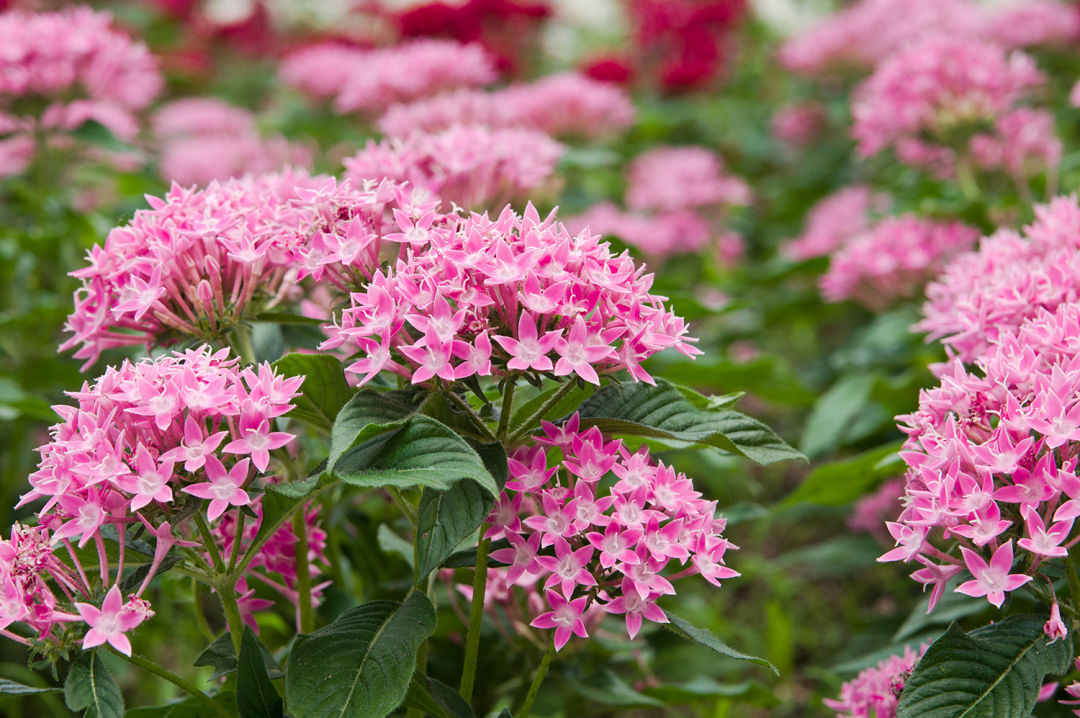How to Grow a Beautiful Lawn This Spring

Pink pentas
Image: zzz555zzz/Shutterstock.com
With the official start of spring on March 21, getting our lawns prepared for their fastest-growing season is important. If you want a lush, green lawn this time of year, follow these tips from ArtisTree Landscape's certified horticultural professional Jeremy Lepper.
Begin mowing your lawn once a week.
There are two varieties of grass most common in southern Florida, St. Augustine and Zoysia, that can be mowed every other week during the winter. But once spring comes around, it's recommended you mow once a week. With longer days and more rainfall beginning April 1, it's important to mow often to keep nutrients circulating through the blades and soil. Cut no more than a third of the grass blade height each mow; depending on grass type, blades should be anywhere from three to five inches tall.
Fertilize your lawn four times a year, once in the spring.
"The county has fertilizer blackout dates, which occur from June 1 to September 31," says Lepper. "So now is the time to be fertilizing your lawn." Fertilizer is banned from use during the summer months to help avoid runoff of chemicals into the Gulf. When you fertilize during the designated time period, Lepper recommends using 1 lb. of fertilizer for every 1,000 square feet per fertilizer application. This will keep your grass growing stronger and greener.
Keep watering once or twice per week, but don't over-water.
During this growing season, grass takes up nutrients from fertilizer more quickly the more it is watered. Watering once or twice per week during springtime is ideal; aim for a half inch of water per application. But make sure lawns are not over-watered and over-saturated, which can lead to shallower roots and less hardy grass. "Check your irrigation system to see how much it is watering each time," says Lepper. "And be sure to have the rain sensors on to control how often your irrigation system is running."
Don't fret if you see brown spots.
"Brown spots in the grass could be a result of fungus, grubs or inadequate irrigation coverage," says Lepper. "But there are plenty of resources that can help you determine the cause." Sarasota-Manatee homeowners can use the University of Florida's IFAS extension options to help them assess the health of their lawn's soil. Visit the website to learn more.
Landscape with plants that can sustain warmer temperatures.
The best types of plants to plant in your front and backyard include those that can sustain the ever-changing weather patterns in Florida. Lepper recommends pentas, a small springtime plant that has flowers in a variety of colors and can withstand direct sunlight, or Lantana bushes, which spread and have lots of yellow flower blooms. "This is the best time of year to start planting things because of the air temperature and amount of rainfall," Lepper explains.
Be patient with fresh blooms.
"We like to tell clients it takes about three years to see a plant grow to its fullest potential," says Lepper. "They need to get acclimated." He uses the phrase "the first year, it's sleeping, the second year, it's creeping and the third year, it's leaping" to describe the rate of growth. Be patient, and don't expect an exotic or non-native plant to always thrive.
Keep trimming those trees, including palms.
Tree trimming is beneficial this time of year, as all varieties are starting to grow branches and fill out with new leaves. Palm trees should also be regularly trimmed, removing dead fronds first. However, keeping palms heavier with fronds at the top is helpful in keeping the tree healthy, especially during hurricane season. "Don't break off a new bud or stem of a palm," says Lepper. "This will stress the tree and cause it to break more during a storm."
For more information on lawn services, visit ArtisTree's website.


